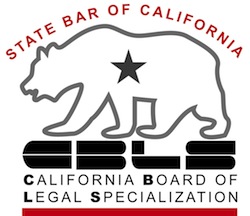Protecting your house from foreclosure ranks high on the list of reasons people file Chapter 13.
The automatic stay stops foreclosures; Chapter 13 gives you time to fix the problem.
Powerful stuff.
But the stay and more time, alone, aren’t enough to save the day if you run afoul of other rules, written and unwritten, about homeownership in Chapter 13.
So, here’s your manual for Protecting Your Home Through Bankruptcy.
Read your Chapter 13 plan
The basic premise of Chapter 13 is that you continue making payments on your home loan during the plan. Typically, you make the payments that come due after you file, plus catch up on any missed payments via your payments to the Chapter 13 trustee.
In the Bay Area, debtors can choose direct payment or a conduit plan
Every Chapter 13 district does things a little differently but they all treat post filing payments in one of two ways:
- either the homeowner makes the payments directly to the mortgage servicer, just as if there were no bankruptcy.
- or, the on going payments are made to the Chapter 13 trustee, who in turn pays the mortgage servicer. (Those are called conduit payments.)
Make sure you know how it works in your district, and when your first payment after filing bankruptcy is due.
Keep track of payments you make
Future disputes about whether you made payments directly to the servicer are virtually certain. Arm yourself with a paper record.
You want your paper trail to be complete and retrievable. Chances are, the servicer’s records won’t be as good.
I suggest clients pay by personal check (so you get a cancelled check) and transmit that payment by a means that gets you a receipt showing delivery. With a receipt, you can monitor whether the servicer is promptly crediting your payment, as they are required to do.
Any automatic payments from your bank account or even your ability to pay electronically will undoubtedly be canceled by the servicer.
Compare monthly statements
A new federal rule requires servicers to continue sending you monthly mortgage statements. That’s a welcome change.
More on the new mortgage statement format
The rule breaks out what is happening with your loan, both as to any pre-bankruptcy default and as to the post-filing payments.
Check out the statements to see if they are consistent, and save them for support in case there’s a dispute in the future.
Watch for payment changes
Your monthly payment on your home loan may change during the Chapter 13. Escrow amounts for taxes or insurance may change; your loan may have an adjustable rate, or a time-limited interest only feature.
Bankruptcy rule 3002.1 now requires the servicer to give you advance notice of any change in the monthly payment you must make. If you are in a conduit district, where the trustee makes the on-going payment, ask your attorney how increases in payments are handled.
The rule also requires the servicer to disclose any fees, expenses or charges that it adds to the loan balance during your case. The disclosure must be made to you, your attorney and the court within 180 days of the expense being incurred. You have the right to challenge the expense and have a hearing on whether it’s truly owed.
Pay your property taxes
Depending on your loan terms, you may pay property taxes directly to the local taxing authority. Staying current on property taxes is a condition of being in good standing on your loan. And if you are not current on your loan for payments due after filing, the lender can get relief from the automatic stay.
Know whether your property taxes are escrowed and thus included in your monthly payment, or whether you pay them directly.
If you pay property taxes directly, make it a habit to set aside 1/12th of your annual property taxes when you make your mortgage payment, so you don’t fall behind.
Avoid suffering a motion for relief from stay
The automatic stay is automatic, but it’s not necessarily forever.
If you fail to make required ongoing payments or fail to keep the property insured, the servicer can file a motion asking the court to lift the stay and allow it to foreclose.
More about motions for relief from the stay
Even if you manage to get a deal to cure any defaults, a motion to lift the stay will add to the lender’s attorneys fees, which they will want to collect from you. And that’s on top of whatever you have to pay your own attorney to protect your property.
Don’t go there: stay current.
Deduct the mortgage interest you pay
A large part of most mortgage payments is made up of interest on the loan balance. That interest and any property taxes you pay to the lender are probably tax deductible. But for reasons I can’t explain, servicers don’t give you a tax form 1098 showing the deductible payments you’ve made or the trustee has made on your behalf.
Follow our how-to on calculating your deduction and assembling the records to support your claimed deduction. If you don’t do it, you can be sure the IRS won’t do it for you.
Reducing your income tax bill frees up money to make your plan payments.
Heads up and keep your house
This post bankruptcy to-do list isn’t complicated but it is important. Armed with knowledge of the possible pitfalls, you can head off trouble and sail through Chapter 13.
More
Mistakes that crater Chapter 13 plans
If you can’t make your plan payments
Why discharge gets snatched away at plan’s end






